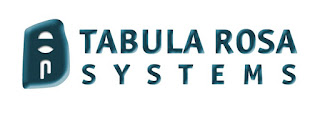www.amazon.com/author/paulbabicki
====================================================

|
Why
Mathematics Is a Language
by
Dr. Helmenstine holds a Ph.D. in biomedical sciences and is
a science writer, educator, and consultant. She has taught science courses at
the high school, college, and graduate levels.
Updated May 08, 2018
Mathematics is called the language of science. Italian
astronomer and physicist Galileo Galilei is attributed with the
quote, "Mathematics is the language in which God has written the
universe." Most likely this quote is a summary of his statement
in Opere Il Saggiatore:
[The universe] cannot be read until we have learnt the language and become familiar with the characters in which it is written. It is written in mathematical language, and the letters are triangles, circles and other geometrical figures, without which means it is humanly impossible to comprehend a single word.
Yet, is mathematics truly a language, like English or
Chinese? To answer the question, it helps to know what language is and how the
vocabulary and grammar of mathematics is used to construct
sentences.
What Is a Language?
There are multiple definitions of "language." A language may be a system
of words or codes used within a discipline. Language may refer to a system of
communication using symbols or sounds. Linguist Noam Chomsky defines language as a
set of sentences constructed using a finite set of elements. Some linguists
believe language should be able to represent events and abstract concepts.
Whichever definition is used, a language contains the
following components:
Mathematics meets all of these requirements. The symbols,
their meanings, syntax, and grammar are the same throughout the world.
Mathematicians, scientists, and others use math to communicate concepts.
Mathematics describes itself (a field called metamathematics), real-world
phenomena, and abstract concepts.
Vocabulary, Grammar, and Syntax in
Mathematics
Mathematical expressions are written from left to right,
even if the speaker's native language is written right to left or top to
bottom. Emilija Manevska / Getty Images
The vocabulary of math draws from many different alphabets
and includes symbols unique to math. A mathematical equation may be stated in
words to form a sentence that has a noun and verb, just like a sentence in a
spoken language. For example:
3 + 5 = 8
could be stated as, "Three added to five equals
eight."
Breaking this down, nouns in math include:
Verbs include symbols including:
If you try to perform a sentence diagram on a mathematical
sentence, you'll find infinitives, conjunctions, adjectives, etc. As in other
languages, the role played by a symbol depends on its context.
Mathematics grammar and syntax, like vocabulary, are
international. No matter what country you're from or what language you speak,
the structure of the mathematical language is the same.
Language as a Teaching Tool
Setting up equations requires practice. Sometimes it helps
to start with a sentence in a person's native language and translate it into
math. StockFinland / Getty Images
Understanding how mathematical sentences work is helpful
when teaching or learning math. Students often find numbers and symbols
intimidating, so putting an equation into a familiar language makes the subject
more approachable. Basically, it's like translating a foreign language into a
known one.
While students typically dislike word problems, extracting
the nouns, verbs, and modifiers from a spoken/written language and translating
them into a mathematical equation is a valuable skill to have. Word problems improve comprehension and
increase problem-solving skills.
Because mathematics is the same all over the world, math can
act as a universal language. A phrase or formula has the same meaning,
regardless of other language that accompanies it. In this way, math helps
people learn and communicate, even if other communication barriers exist.
|
Good Netiquette And A Green Internet To All! =====================================================================Tabula Rosa Systems - Tabula Rosa Systems (TRS) is dedicated to providing Best of Breed Technology and Best of Class Professional Services to our Clients. We have a portfolio of products which we have selected for their capabilities, viability and value. TRS provides product, design, implementation and support services on all products that we represent. Additionally, TRS provides expertise in Network Analysis, eBusiness Application Profiling, ePolicy and eBusiness Troubleshooting.
We can be contacted at:
===============================================================In addition to this blog, Netiquette IQ has a website with great assets which are being added to on a regular basis. I have authored the premiere book on Netiquette, “Netiquette IQ - A Comprehensive Guide to Improve, Enhance and Add Power to Your Email". My new book, “You’re Hired! Super Charge Your Email Skills in 60 Minutes. . . And Get That Job!” has just been published and will be followed by a trilogy of books on Netiquette for young people. You can view my profile, reviews of the book and content excerpts at:
www.amazon.com/author/paulbabicki
Anyone who would like to review the book and have it posted on my blog or website, please contact me paul@netiquetteiq.com.
In addition to this blog, I maintain a radio show on BlogtalkRadio and an online newsletter via paper.li.I have established Netiquette discussion groups with Linkedin and Yahoo. I am also a member of the International Business Etiquette and Protocol Group and Minding Manners among others. I regularly consult for the Gerson Lehrman Group, a worldwide network of subject matter experts and I have been contributing to the blogs Everything Email and emailmonday . My work has appeared in numerous publications and I have presented to groups such as The Breakfast Club of NJ and PSG of Mercer County, NJ.
Additionally, I am the president of Tabula Rosa Systems,
a “best of breed” reseller of products for communications, email,
network management software, security products and professional
services. Also, I am the president of Netiquette IQ. We are currently developing an email IQ rating system, Netiquette IQ, which promotes the fundamentals outlined in my book.








No comments:
Post a Comment